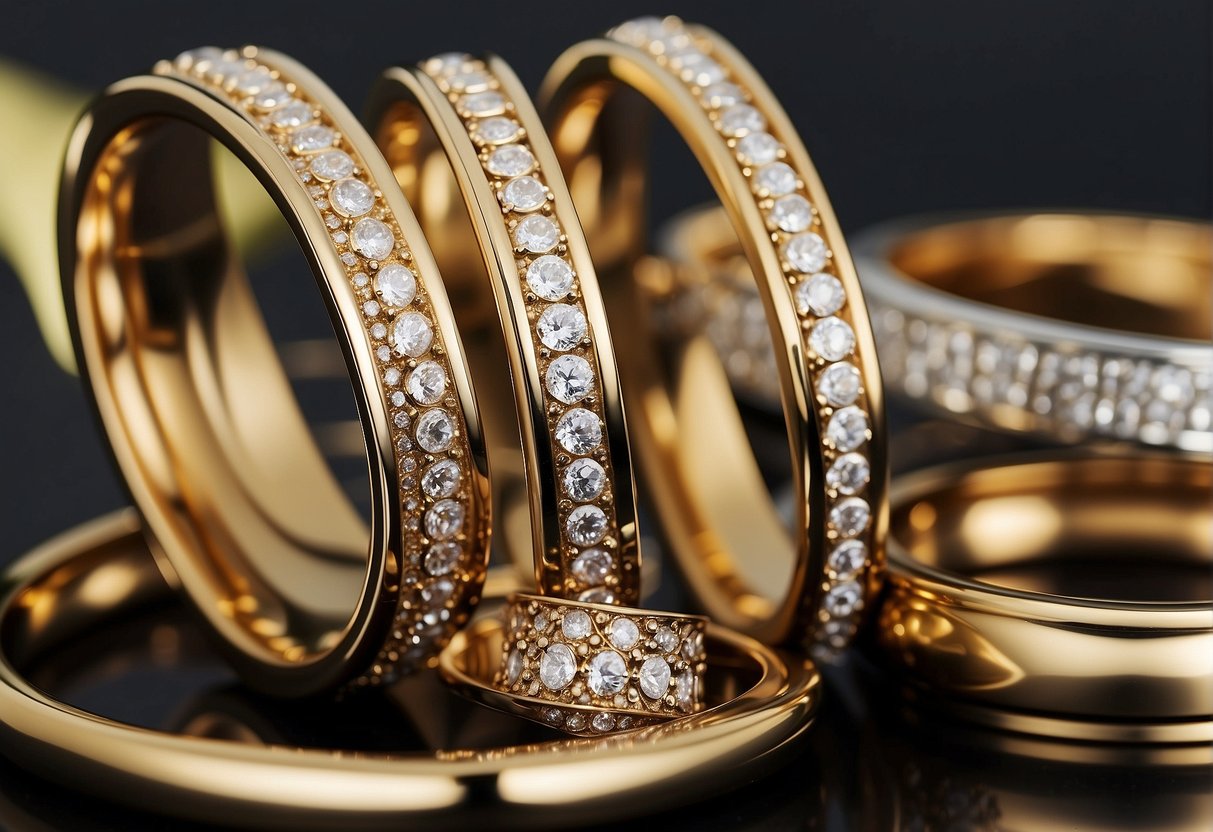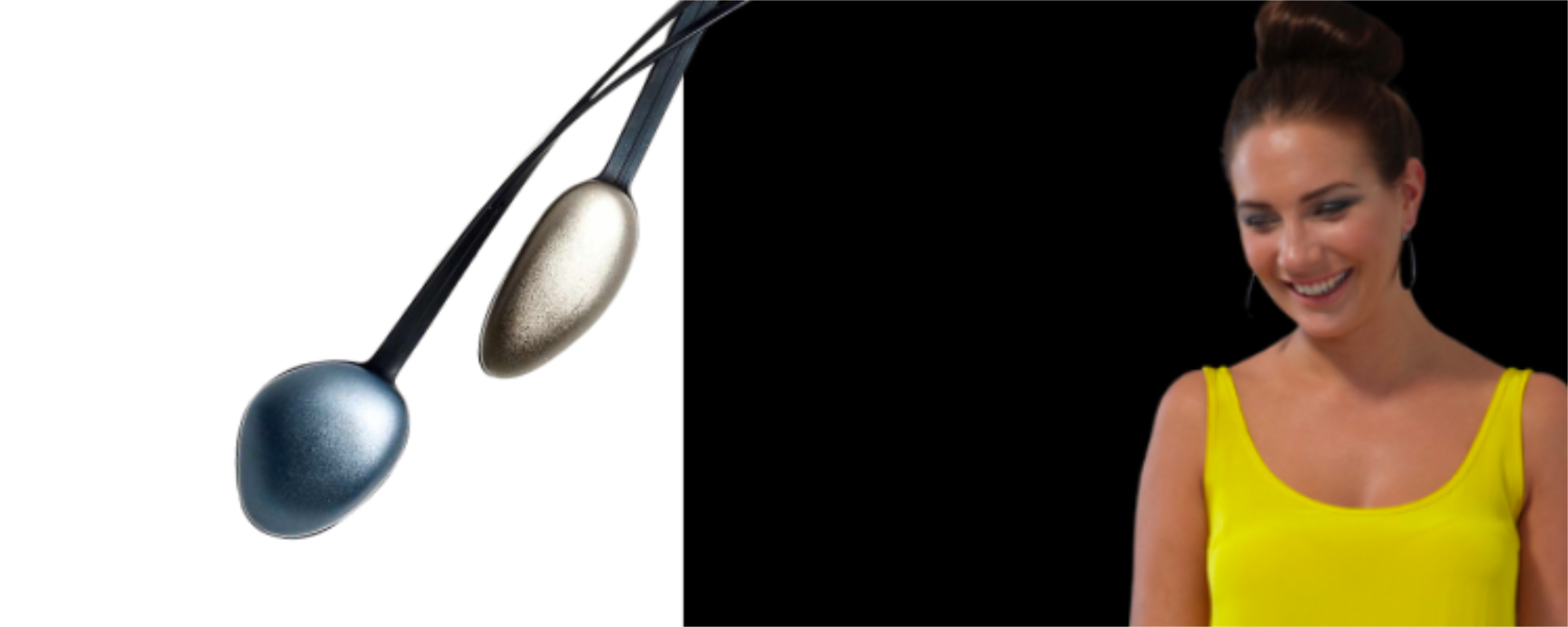Can You Wear Stainless Steel with Gold Jewelry: A Style Guide for Mixing Metals
When it comes to accessorising, mixing and matching different jewellery materials can seem daunting.
One popular question people often ask is whether you can wear stainless steel with gold jewellery. The answer is, absolutely!
Gone are the days when combining different metals in your ensemble was considered a fashion faux pas. In fact, mixing metals like stainless steel and gold is now a trend that showcases your unique and creative style.
Stainless steel is a go-to material for many jewellery aficionados due to its durability, affordability, and versatile appearance. It complements most outfits, from casual wear to formal attire.
Meanwhile, gold adds a touch of elegance and sophistication to your jewellery collection.
While gold-plated stainless steel will eventually tarnish, taking proper care of your pieces can help extend their lifespan and keep them looking vibrant.

Understanding the Basics of Mixing Metals
The Composition of Stainless Steel and Gold
Stainless steel and gold jewellery can add a stylish touch to your outfits. Understanding their composition is crucial to mixing these metals harmoniously.
Stainless steel is an alloy primarily made up of iron and carbon, with added elements such as chromium and nickel.
Chromium provides a high level of corrosion resistance, while nickel enhances its durability.
There are various grades of stainless steel in jewellery, with the most common being 316L and 304. Both of these grades contain a mix of chromium, nickel, and carbon, but 316L has a higher resistance to corrosion due to its increased chromium and nickel content.
Gold, on the other hand, is a precious metal primarily composed of gold (Au) and copper. Gold's colour can vary depending on the purity and other alloy elements added.
For example, white gold contains a higher percentage of nickel or palladium, while rose gold has a larger copper content.
Benefits of Stainless Steel in Jewellery
- Affordable: Stainless steel jewellery pieces are generally less expensive compared to gold. Therefore, you can add trendy, chic accents to your wardrobe without breaking the bank.
- Durable: Stainless steel is known for its strength and resistance to scratching. This makes it excellent for everyday wear, as it can withstand daily activities without losing its lustre.
- Hypoallergenic: Many people suffer from nickel allergies. Luckily, the chromium coating on stainless steel pieces can act as a barrier that prevents skin irritation. This makes stainless steel perfect for those with sensitive skin.
Here's a comparison of the key features of stainless steel and gold jewellery:
| Material | Affordability | Durability | Hypoallergenic |
|---|---|---|---|
| Stainless Steel | High | High | Yes |
| Gold | Low | Moderate | No |
To successfully mix stainless steel and gold, ensure that the styles and designs of your jewellery pieces complement each other.
For instance, when pairing a stainless steel watch with gold bracelets, choose minimalistic pieces to prevent overcrowding.
Remember, balance is essential when mixing metals, so let one metal take the lead while the other serves as a subtle accent.
Jewellery Maintenance and Durability

Caring for Stainless Steel and Gold Jewellery
When it comes to maintaining your stainless steel and gold jewellery, keeping them clean and well-cared for is essential.
Stainless steel jewellery is known for its durability and resistance to tarnish and corrosion, making it a great choice for everyday wear.
Gold plated pieces, on the other hand, require more care due to their nature, as the gold layer can wear off over time.
Cleaning stainless steel pieces is simple. You can use a soft cloth and some mild soap to get rid of any dirt and grime that may have accumulated.
For gold plated jewellery, it's better to use a special cleaner designed for gold or refer to the manufacturer's cleaning instructions.
Preventing Tarnish and Wear
To keep your stainless steel and gold plated jewellery looking new and polished, you should follow some basic care tips.
Stainless steel rings, necklaces, earrings, and bracelets provide incredible durability, but they can still be susceptible to scratches.
So, it's best to store them separately from each other to prevent friction causing any damage.
Here are some practical tips to preserve the appearance of your stainless steel and gold plated jewellery:
- Avoid exposure to harsh chemicals or environments. Chemicals, such as chlorine found in swimming pools, can react with metals and affect the colour and integrity. Make sure to remove your jewellery before entering a pool or using harsh cleaners.
- Keep your jewellery dry. While stainless steel and gold plated pieces can be waterproof, it's best to avoid wearing them while swimming or showering to prevent potential damage or discoloration from water, salt, and sweat.
- Polish them regularly. Use a soft cloth to polish your stainless steel jewellery to maintain its shine. On the other hand, a gold-polishing cloth can help to keep your gold plated pieces looking bright and new.
- Apply cosmetics before putting on jewellery. It prevents your jewellery from coming into contact with perfumes, lotions, or hairspray that could result in tarnishing or fading over time.
- Choose between matte and glossy finishes. Different finishes behave differently. Whereas a polished surface can show scratches more profoundly, a matte finish might not exhibit visible wear as much.
Health and Safety Considerations

Understanding Metal Allergies and Skin Sensitivity
Metal allergies and skin sensitivity are common concerns when it comes to wearing jewellery.
Certain metals, like nickel and lead, are known to cause skin irritation and allergic reactions in some individuals.
Nickel, a naturally occurring metal with a silver finish, is widely used in costume jewellery, zippers, and other items. Nickel allergy can cause redness, itching, and even blisters on the skin.
On the other hand, exposure to lead, particularly in young children, may lead to developmental delays and has been linked to serious health issues.
Cadmium, another harmful heavy metal, has been found in some low-quality jewellery pieces and can be similarly dangerous.
To avoid these risks, it's crucial to opt for hypoallergenic and safe jewellery materials like stainless steel, platinum, silver, and titanium. These metals are less likely to cause skin irritation or allergies, making them perfect for people with sensitive skin.
Selecting Safe Jewellery for Kids and Sensitive Skin
When choosing jewellery for kids and individuals with sensitive skin, it's important to select materials that are not only attractive but also safe and hypoallergenic.
The following metals are popular choices due to their low likelihood of causing allergies or skin irritation:
-
Stainless Steel: Durable, versatile, and low maintenance, stainless steel is a fantastic option for everyday wear. It's highly resistant to corrosion and scratches, ensuring your jewellery looks great with minimal upkeep. Plus, it's a hypoallergenic material.
-
Platinum: While it's on the pricier side, platinum is a luxurious and hypoallergenic option that's naturally white and won't tarnish. It's an excellent choice for those with nickel allergies or sensitivities.
-
Silver: Silver is a timeless and classic metal, popular for its stunning appearance and versatile properties. In particular, look for sterling silver, which contains 92.5% pure silver and 7.5% other metals, usually copper or molybdenum. This alloy is hypoallergenic and safe for sensitive skin.
-
Titanium: Known for its strength and lightweight nature, titanium offers hypoallergenic qualities without compromising on style or durability. It's particularly suitable for those with sensitive skin or metal allergies.
Frequently Asked Questions

Is it safe to pair stainless steel jewellery with gold pieces?
Yes, you can safely pair stainless steel jewellery with gold pieces. Both materials are durable and resistant to tarnish and corrosion.
Stainless steel is hypoallergenic, meaning it is unlikely to cause an allergic reaction. So, feel free to mix and match your favourite gold and stainless steel accessories.
Will gold plating on stainless steel endure over time?
Gold plating on stainless steel can last for years with proper care.
Stainless steel is known for its durability and the gold plating adds an extra layer of protection.
However, the longevity of the gold plating will also depend on the thickness of the layer and the quality of the plating process.
To maintain the appearance of your gold-plated stainless steel jewellery, avoid harsh chemicals and abrasive surfaces.
Are there any drawbacks to wearing stainless steel and gold simultaneously?
There are no significant drawbacks to wearing stainless steel and gold jewellery together.
However, it is important to consider the varying degrees of hardness of each material.
Stainless steel is highly scratch-resistant, while gold is a softer metal.
To avoid any potential scratching, it is recommended to store your gold and stainless steel jewellery separately.
How does stainless steel impact the longevity of gold jewellery?
Stainless steel does not have a direct impact on the longevity of gold jewellery.
Both materials are durable and long-lasting when cared for properly.
The most critical factor in caring for your gold and stainless steel pieces is regular cleaning and avoiding exposure to harsh chemicals or abrasive surfaces.
Can stainless steel accessories cause discolouration to gold items?
Stainless steel accessories should not cause discolouration to gold items, as stainless steel is a corrosion-resistant, hypoallergenic material.
However, it is essential to keep both your gold and stainless steel pieces clean and dry to prevent any potential chemical reactions or tarnish.
Is it advisable to wear gold-plated stainless steel accessories in saltwater environments?
While stainless steel is known for its durability and corrosion resistance, it is not recommended to wear gold-plated stainless steel accessories in saltwater environments.
Salt water can accelerate the wear and tear on the gold plating, causing it to deteriorate more quickly.
To keep your gold-plated stainless steel jewellery looking its best, remove it before swimming in salt water or exposing it to other harsh environments.




